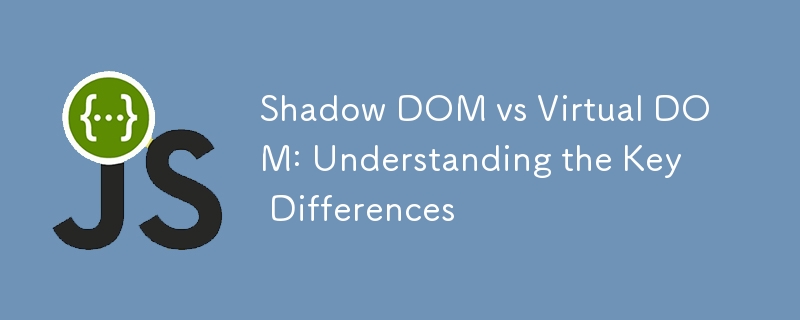

As front-end development evolves, technologies like Shadow DOM and Virtual DOM have become increasingly essential. Both aim to improve web application performance and maintainability, but they do so in different ways. This article delves into the key differences between Shadow DOM and Virtual DOM, exploring their use cases, benefits, and how they impact modern web development.
Definition: The Shadow DOM is a web standard that encapsulates a section of the DOM, isolating it from the rest of the document. This encapsulation includes styles and behavior, ensuring that they do not affect or are not affected by other parts of the document.
Use Cases:
Benefits:
Example:
<!DOCTYPE html>
<html lang="en">
<head>
<meta charset="UTF-8">
<title>Shadow DOM Example</title>
</head>
<body>
<div id="host"></div>
<script>
// Create a shadow root
const host = document.getElementById('host');
const shadowRoot = host.attachShadow({ mode: 'open' });
// Attach a shadow DOM tree to the shadow root
shadowRoot.innerHTML = `
<style>
p {
color: blue;
}
</style>
<p>This is inside the Shadow DOM.</p>
`;
</script>
</body>
</html>
Definition: The Virtual DOM is a concept where a virtual representation of the UI is kept in memory and synced with the real DOM using a library like React. This process is known as reconciliation.
Use Cases:
Benefits:
Example:
import React, { useState } from 'react';
function App() {
const [count, setCount] = useState(0);
return (
<div>
<p>{count}</p>
<button onClick={() => setCount(count + 1)}>Increment</button>
</div>
);
}
export default App;
Purpose:
Encapsulation:
Usage:
Implementation:
Both Shadow DOM and Virtual DOM are crucial technologies in modern web development, each serving different purposes. Shadow DOM excels in encapsulation and reusability of components, making it ideal for Web Components. On the other hand, Virtual DOM shines in performance optimization and efficient UI rendering, particularly in dynamic applications managed by libraries like React.
Understanding these differences helps developers choose the right tool for their specific needs, ultimately leading to better-structured, maintainable, and performant web applications.
The above is the detailed content of Shadow DOM vs Virtual DOM: Understanding the Key Differences. For more information, please follow other related articles on the PHP Chinese website!




